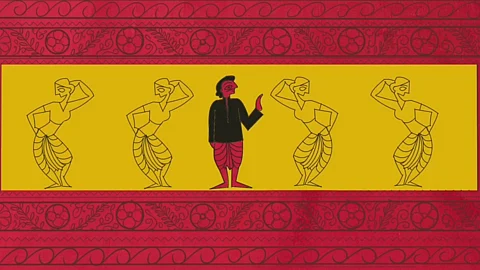
- HOMEGROWN WORLD
- #HGCREATORS
- #HGEXPLORE
- #HGVOICES
- #HGSHOP
- CAREERS
- ABOUT US
- CONTACT US

Before we could even read, it was the stories our parents and grandparents told us that painted the first pictures in our minds. Tales of talking animals, greedy kings, clever tricksters, and magical fish weren’t just bedtime were blueprints for how we imagined the world. These stories helped build our sense of wonder, morality, and culture. But beyond individual families, many communities across India have carried entire legacies through oral traditions. Passed down not in books but in voices, gestures, songs, and memory, these narratives hold the essence of lived history, collective identity, and timeless imagination.
Yet, as the world changes towards being more visual, a question arises — how do we carry these stories forward? And the answer comes in the form of the Centre for Contemporary Folklore (CCF). A passionate, clear-eyed initiative by the ParrotHouse Foundation, CCF is committed translating intangible, age-old traditions into living, visual, and accessible forms. They believe that folklore isn't frozen in time, it’s alive, constantly reinterpreted by those who tell and retell it. Their work, then, bridges scholarly research with community knowledge, fostering intergenerational and interdisciplinary dialogue.
One of their recent projects is 'Lobhi Jomidar' —a Bengali folktale of a greedy landlord who was known for his immense wealth, and even greater greed, who underpaid his workers, hoarded riches, and treated everyone around him with disdain. One day, his men caught a golden fish while fishing by the river. To their astonishment, the fish spoke and offered the zamindar one wish. Without hesitation, he asked for more gold — an endless supply of it. The fish granted his wish: everything he touched would turn to gold. The landlord was elated at first but the gift turned into a curse when every time he went to eat a meal, his food turned to metal, and even his beloved daughter became a golden statue in his arms. Surrounded by shining emptiness, the zamindar found himself completely alone — a prisoner of his own desire.
For Stuti Mohanta, the animator behind the video, this allegorical tale was a kind of personal inheritance. 'Lobhi Jomidar' was a story her Nani often told her and her brother during summer visits to Kolkata. “I don't know the real version of this story,” she shares. “Honestly, I couldn't find it when I searched for it on the Internet."
The act of animating it became a way to honour that past and hold it up to the light. “I don't follow a fixed creative process,” she explains. “It usually starts with a vague visual or a feeling that grabs me. I keep building on it, layer by layer, through a lot of visual research — especially on platforms like Pinterest or Instagram.” For this project, inspiration came from something seemingly simple: “It was a saree embroidery that sparked something. It wasn’t just beautiful; it was telling a story, illustrating a wedding ritual, and that moment instantly clicked for me.” Consequently, Lobhi Jomidar is steeped in the familiarity of traditional motifs, brought alive by Stuti’s intuitive approach to animation.
Stuti’s journey into animation began only recently. “My dad has been one of the biggest influences in my life. He introduced me to the world of art, and I’ve been drawing ever since I learned how to hold a pencil. He was an artist himself, and growing up, he always encouraged my brother and me to create.” Though animation wasn’t always on the cards, it found her just after college, during a gap between internships. “It started as something I was just trying out, but it quickly turned into something I genuinely enjoyed.”
As our lives grow more fragmented and screen-bound, a lot of us are looking for something to ground us — for meaning, for connection, for a sense of belonging. And folktales used to be allegories that shed light on human nature, how we interact with the world, and how we relate to each other. They serve as a back-to-basics guide to life — something we seem to be yearning for more than ever. As she reflects on reviving Lobhi Jomidar, Stuti reiterates, “We're watching the world become more and more individualistic and self-serving. I think this story is relevant now more than ever.”
If you enjoyed reading this here's more from Homegrown:
Watch An Animated Short Film That Captures The Powerful Magic Of Bhil Folklore & Art
'Wives & Wives': Watch A Jetsons-Esque Animated Short By Pramod Pati & G.K. Gokhale
Subarna Dash's 'This Is TMI' Uses Breasts To Unpack Objectification & Feminine Identity
